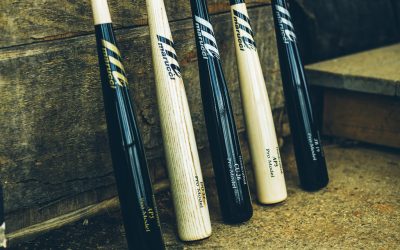Wood
While metal and composite bats dominate the market with their technological advancements, there’s a timeless allure to the classic wooden baseball bat. Let’s delve into the fundamentals of wood baseball bats to uncover why they remain a staple among players of all levels.
Why Choose Wood?
Wood baseball bats have been synonymous with the sport since its inception, embodying tradition and craftsmanship. Their allure lies in their natural feel and performance, offering a connection to the roots of the game. While metal and composite bats may provide advantages in terms of durability and consistency, wooden bats offer a unique experience that many players cherish.
Metal Vs. Wood
When deciding between wood and metal baseball bats, players face a choice rooted in tradition versus modern innovation. Wooden bats offer a classic feel and connection to the game’s heritage, with their natural sound upon contact and customizable options in wood type and turn models. Conversely, metal bats, crafted from aluminum or composite materials, provide durability, a larger sweet spot, and enhanced power potential, albeit with a different sound and potentially stricter league regulations. Ultimately, the decision hinges on personal preference, playing style, and adherence to league rules, with players often weighing the timeless appeal of wood against the performance advantages of metal. You will see wood bats in the MLB and mostly metal bats in high school and college baseball. Here is our full article comparing and contrasting wood and metal bats, check it out!
Types of Wood
Various types of wood are used in crafting baseball bats, each with its own characteristics. Maple, ash, and birch are among the most popular choices, each offering distinct qualities in terms of durability, flexibility, and weight distribution. Maple bats are renowned for their hardness and durability, ash bats for their flexibility and forgiveness, while birch bats offer a balance of both.
Craftsmanship
The art of crafting wooden baseball bats involves precision and expertise. From selecting the finest wood to turning and finishing the bat, skilled craftsmen ensure that each bat meets rigorous standards. Attention to detail in the shaping of the barrel, handle, and knob plays a crucial role in determining the bat’s performance and feel.
Understanding Turn Models
A turn model refers to the specific dimensions and features of a baseball bat, including the barrel diameter, handle thickness, taper, and knob style. Manufacturers offer a wide array of turn models, each characterized by unique specifications that influence the bat’s balance, swing weight, and hitting surface. A few of the most popular turn models include the: 271, 110, 243, I-13, and 318.
Choosing the Right Turn Model
Selecting the right turn model is crucial for maximizing performance at the plate. Players should consider factors such as their hitting style, swing mechanics, and personal preferences when choosing a bat. For example, power hitters may prefer bats with larger barrels and thicker handles to generate maximum momentum and power, while contact hitters may opt for bats with thinner handles and more balanced weight distribution for better bat control and maneuverability. Read our full article that dives into the specifics of the wood bat turn models and how to determine which one is best for you, here!
Wood baseball bats hold a special place in the hearts of players and fans alike, embodying the essence of the sport’s rich history. While they may require more skill and maintenance compared to modern alternatives, their timeless appeal and performance make them a worthy choice for any player looking to elevate their game. Explore our complete guides and reviews to help you become your own expert on wood bats!
| All Wood
Wood Bat Turn Models: Which one is for me?
Wood baseball bats come in various turn models, each designed to cater to the preferences and playing styles of different players. The turn model of a bat refers to its specific dimensions, including barrel diameter, handle thickness, and taper. In...
Metal vs Wood Bats
The choice between metal and wood bats has long been a subject of passionate debate among baseball players, coaches, and enthusiasts. Each type of bat offers distinct advantages and disadvantages, leading to diverse opinions on which is the...


